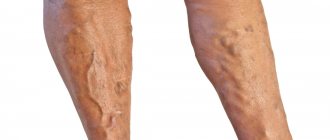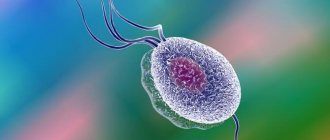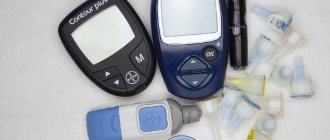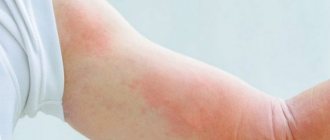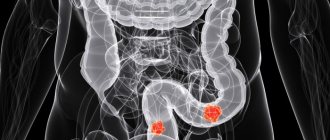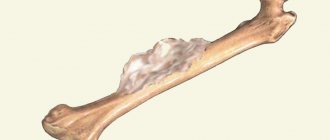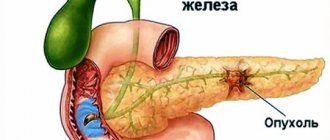Escherichiosis (Escherichia coli) is an infectious disease that affects the human intestines. The causative agents of this disease are bacteria of the escherichia coli species, which are also called Escherichia coli. This disease is most widespread in countries with a tropical, hot climate, since there are all the conditions for its development. That is why escherichiosis is called “travelers’ disease”: most often it affects people who travel a lot, but their body is not prepared for sudden climate changes and changes in diet.
You can catch this disease if you do not follow basic rules of personal and food hygiene. What does this mean? For example, if you are not accustomed to washing your hands before eating, are not accustomed to thoroughly frying the meat you eat, or boiling milk, then rest assured that sooner or later you will have to treat escherichiosis (sometimes manifested as enteritis or colienteritis). The harmful bacteria escherichia coli was first discovered by the German physician and scientist T. Escherich at the end of the 19th century. There are several types of diarrheagenic Escherichia coli:
- enteropathogenic escherichiosis;
- dysentery-like;
- enterohemorrhagic;
- cholera-like or enterotoxic.
Features of the disease
The intestinal bacterium became known in 1885, thanks to the German microbiologist Theodor Escherich (after whom E. coli is named).
Enterotoxin is a heat-stable protein that affects the function of the epithelial tissue of the intestinal gland and activates enzymes that affect intracellular signaling structures.
Electrolytes and water cease to be fully absorbed into the mucous walls, problems with the gastrointestinal tract (diarrhea) arise, and gradual dehydration of the body is possible.
Escherichiosis is a rod-shaped, gram-negative bacteria that settles in the intestinal mucosa of humans or animals.
Escherichia has many varieties and in a calm state performs an important function - they synthesize vitamin K and prevent infections from multiplying.
But as soon as escherichiosis mutates, changing beneficial properties to aggressive ones, the intestinal microflora is disrupted. The mutation depends on the antigen and its structure.
Types of E. coli:
- Enteroinvasive – inflammation of the large intestine. Once inside the body through water or stale food, the stick can provoke enterocolitis (simultaneous inflammation of the small and large intestines);
- enteroadhesive - the bacterium adheres to the membrane, blocking the gaps and preventing food particles from being absorbed;
- enteropathogenic - damages the protective layer of intestinal villi. In children under 12 months of age, frequent loose stools with abundant mucous are diagnosed. A common occurrence in kindergartens due to poorly sanitized toys, lunch tables, dirty towels or hands;
- enterohemorrhagic – causes severe diarrhea. The pathogen produces a toxin that destroys the mucous membrane. Transmitted through poorly fried meat, missing milk, cheese;
- enterotoxigenic – similar to cholera. Loose stools are observed due to food poisoning (boiled salad vegetables), dirty water (lakes and reservoirs with toxic waste emissions, bad tap water, homemade fruit drinks, jelly).
E. coli does not die in the environment for up to 2.5-3 months and loves hot countries with high humidity.
Having settled on clothing, poorly treated surfaces or food, Escherichia begins to actively reproduce. Sometimes the infection is carried by domestic animals or cattle. Together with E. coli, you can become infected with helminthiasis - intestinal parasites that are transmitted after contact with animal fur.
Symptoms of Escherichiosis
Young children are susceptible to intestinal infections due to an incompletely developed immune system. Babies often get sick, especially for newborns growing up on artificial formulas (bacteria actively multiply inside the dry powder).
Escherichiosis can occur in gastroenteric, enterocolitic, gasteroenterocolitic and generalized forms. Sometimes a latent form is diagnosed, when a person is a carrier of the infection but is unaware of it and does not feel any symptoms.
The intestinal walls become inflamed, there are headaches, fever (up to 39°C), lethargy, aching joints, and gripping or cutting in the abdomen. Frequent diarrhea for up to 5 days, feces with mucous secretions, less often with blood fibers.
Poisoning occurs abruptly, attacks of pain and the urge to defecate decrease after 2 days. There may be no increase in temperature. Ten days later, health is completely restored.
Bacteria actively multiply in the small intestine. Feces are liquid, light, with undigested food particles. The urge to defecate can reach up to 9-10 times a day. Gastrointestinal disturbances lead to loss of appetite, weakness, the skin becomes whitish, painful attacks in the abdomen alternate with frequent vomiting.
Occurs in newborns (sepsis) and adolescents (enterocolitis). An acute course is noted with high fever (up to 39°C), nausea and severe vomiting.
Due to lack of appetite, body weight decreases sharply, and the child often freezes.
The stool is watery and yellowish-orange in color. On the skin there is an allergic rash or ulcers with pus (with sepsis in newborns).
In an adult, the disease proceeds without complications, stool is free of impurities, and sometimes blood pressure rises.
Produces destructive antibodies that attack the upper part of the large intestine (lining blood vessels, piercing the membrane).
The symptoms are the same: there is a painful sensation in the lower abdomen, but the stool is free of impurities and there is no fever. Then the state of health worsens, the stool contains bloody threads, the stool is liquid, the stomach is seething.
Not fully studied. Escherichiosis envelops the intestinal lining, interfering with the digestion process - food is practically not absorbed.
It can provoke the development of colpitis, meningitis, pyelonephritis, toxic shock, sepsis, and renal failure.
Treatment of escherichiosis
After palpation of the abdominal cavity, the gastroenterologist gives a referral for standard tests: blood, urine, feces. Particles of feces or urine are placed in a favorable environment for reproduction and the growth of bacteria is monitored.
To detect infection, a small amount of vomit is taken.
Treatment depends on how the patient follows the doctor's recommendations. Escherichiosis persistently withstands the action of antibiotics, so the fight against infection consists of following a therapeutic and restorative diet and using folk recipes.
Description
The disease is an intestinal infection and is therefore easily transmitted from person to person. If one person in a family gets sick, the rest soon become infected as well. Especially often, young children suffer from escherichiosis, whose immunity has not yet been formed and cannot resist a bacterial attack.
Pathogen
Escherichiosis is caused by Escherichia coli, a gram-negative intestinal bacillus. It is an aerobe, i.e. requires free molecular oxygen. Non-pathogenic Escherichia are present in the healthy intestinal microflora, where they perform certain functions: controlling the balance of hydrochloric acid, ensuring normal peristalsis, producing antibiotic-like substances, etc.
Curious! Escherichia coli is so called because it parasitizes the intestines, and under a microscope it looks exactly like a small stick.
Non-pathogenic Escherichia cannot mutate into pathogenic. But it can get into other organs and provoke inflammatory diseases. For example, when such a bacterium penetrates into the abdominal cavity, peritonitis begins, in the vagina - colpitis, etc.
Escherichiosis develops as a result of pathogenic bacteria entering the intestine from outside, which are classified into 5 groups.
| Abbreviation | Name of E. coli | What part of the intestine is affected? | What problems does it cause? |
| ETEC | Enterotoxigenic | Small intestine | Traveler's diarrhea and cholera-like diarrhea |
| EIEC | Enteroinvasive | Colon | Dysentery |
| EPEC | Enteropathogenic | Small intestine | Diarrhea in children under one year of age |
| EGEC | Enterohemorrhagic | Colon | Hemorrhagic colitis (diarrhea with blood) |
| EAEC | Enteroadhesive | Small intestine | Diarrhea in children |
E. coli are very tenacious, which explains such frequent infection with them. They can persist for a long time not only in water and feces, but also in dried soil. Escherichia multiply easily, but die at high temperatures (boiling) and when exposed to bleach (therefore, in infectious diseases departments of hospitals, floors are often washed with bleach). Direct sunlight is also harmful to E. coli.
Routes of infection
The source of the pathogen is people with escherichiosis. The main mechanism of transmission is fecal-oral. The route of infection is household, food and water. Those. It is enough to drink from the same mug as a sick person, and Escherichiosis cannot be avoided. Less commonly, you can become infected through dairy products and meat.
Most often, small children (under one year old) suffer from escherichiosis, but kindergarteners are also at risk. Children's immunity is not able to fight such tenacious bacteria, therefore, after contact with a sick child or something belonging to him, babies become infected with almost 100% probability.
Adults can avoid Escherichiosis if they have a strong immune system. But some symptoms still sometimes occur. Also, susceptibility to E. coli increases in those who travel to a different climate zone (that’s why one type of escherichiosis is called traveler’s diarrhea).
Forms of escherichiosis in adults
There are several forms of intestinal escherichiosis, depending on the strain (type) of E. coli and, as a consequence, the nature and severity of the disease.
Enteroinvasive escherichiosis : with this form, not only the small but also the large intestine is affected:
- the incubation period is short (from 6 hours to 3 days);
- the disease begins with a sharp increase in body temperature to 37-39 ° C;
- abdominal pain (localized mainly in the lower abdomen);
- nausea;
- vomit;
- headache;
- general weakness, weakness;
- decreased appetite;
- muscle pain;
- stools become more frequent up to 10 times a day, stools are liquid, mushy, contain an admixture of mucus, and sometimes blood;
- after 1-2 days, the body temperature usually returns to normal, the stool becomes normal and formed.
Enterotoxigenic escherichiosis:
- incubation period from several hours to 2 days;
- begins with vomiting, and after a few hours comes copious, watery, loose stools without a characteristic fecal odor up to 10 times a day;
- body temperature usually remains within normal limits;
- the total duration of the disease is 5-7 days;
- recovery occurs even without treatment.
Enterohemorrhagic escherichiosis.
- The incubation period is 2-4 days.
- It occurs without symptoms of general intoxication (headache, muscle pain).
- Body temperature usually does not increase.
- On the first day of the disease, stools are usually 4-5 times a day, watery, without blood.
- Then severe pain, cramps in the lower abdomen, and frequent loose stools mixed with blood (scarlet or blood clots) appear. This is due to the involvement of the large intestine in the pathological process.
- With this form of escherichiosis, complications are possible: severe kidney damage (hemolytic-uremic syndrome);
- thrombocytopenic purpura (a severe disease in which the number of platelets decreases and massive bleeding develops);
- If such complications develop, a person may die.
There is an erased (asymptomatic, latent) form of escherichiosis, in which:
- there are no clinical manifestations or they are invisible;
- a person can be a source of infection, especially if he is involved in the preparation and sale of food.
How to treat
Treatment of escherichiosis does not require hospitalization, except in severe cases with a risk of complications. A child under one year old can also be admitted to the hospital (along with the mother, of course), because Babies are more susceptible to any kind of infection.
The treatment tactics for escherichiosis include several points.
- Following a gentle diet (table No. 4). Products should not further irritate the intestinal mucosa. When the symptoms subside, move to table No. 13.
- Drink plenty of fluids to reduce fever and prevent dehydration. Sometimes you need to drink, as they say, through “I don’t want to.”
- Taking antibiotics that are active against identified E. coli. This may be amoxicillin, levofloxacin, rifaximin, etc.
- Taking rehydration mixtures to maintain salt balance (Regidron drug). They are drunk throughout the day, as well as after each visit to the toilet.
- Taking probiotics and enterosorbents as prescribed by your doctor. This is necessary to normalize digestion and eliminate symptoms of indigestion.
It is also necessary to maintain personal hygiene during treatment. The patient should wash their hands thoroughly after using the toilet. It is also advisable to use some kind of disinfectant for the toilet every time, and flush the water only with the lid closed. Underwear should be changed at least twice a day. Bed linen - every day. All linen should not only be washed with laundry soap, but also ironed or boiled. This will prevent self-infection and also protect family members from escherichiosis.
By the way! Immunity after suffering from escherichiosis is fragile and short-lived. The risk of becoming infected again occurs 1-2 months after recovery. In addition, next time it may be a different pathogen.
Diagnosis of escherichiosis in an adult
- Analysis of the medical history and complaints (when the abdominal pain appeared, whether and how many times there were loose stools, vomiting, etc.).
- Epidemiological history (registration of disease outbreaks in children's groups, in medical institutions, hospitals where the patient was, in nursing homes).
Since the disease has a clinical picture similar to other intestinal infections, the decisive factors in making a diagnosis are:
- bacteriological method: feces, vomit, blood, urine and other biological fluids are placed on special nutrient media, followed by microscopic examination of the grown colonies. If growth of Escherichia coli is observed, a diagnosis of Escherichiasis is made. At the same time, the sensitivity of the microorganism to various antibiotics is determined in order to subsequently prescribe adequate treatment;
- serological diagnostics (determination of antibodies in the blood). Antibodies are specific proteins of the immune system, the main function of which is to recognize the pathogen (virus or bacteria) and its further elimination;
- PCR diagnostics (polymerase chain reaction) to determine DNA of various strains (species) of pathogenic Escherichia coli in stool;
- examination of stool for dysbacteriosis is a method that allows us to identify a violation of the intestinal microflora or bacterial carriage (a condition in which a person is a carrier of pathogenic Escherichia, accompanied by the absence of clinical symptoms. The carrier feels absolutely healthy, but releases the pathogen into the environment, thereby representing a source of infection for healthy people others).
Treatment of escherichiosis in adults
- Treatment of severe forms of the disease must necessarily be carried out in an infectious diseases hospital.
- Antibiotic therapy taking into account data on identifying the sensitivity of Escherichia coli to antibiotics.
- Prescription of probiotics (preparations containing bacteria related to representatives of healthy intestinal microflora). This is done in order to maintain the natural bacterial composition of the intestines, since antibiotics have a detrimental effect not only on pathogenic microflora, but also on healthy ones, as a result of which dysbiosis can develop.
- Gentle diet (exclusion of rough foods, spicy, smoked, fried, canned, alcohol).
- Drink plenty of fluids.
- In case of severe dehydration, intravenous administration of water-salt solutions and glucose solutions is prescribed.
- Enterosorbents are drugs that absorb waste products of a pathogenic microorganism, for example, toxins.
Treatment of other diseases starting with the letter - e
| Treatment of eczema |
| Treatment of pleural empyema |
| Treatment of emphysema |
| Treatment of endocarditis |
| Treatment of endocrine ophthalmopathy |
| Treatment of endometriosis |
| Treatment of endometritis |
| Treatment of enteritis |
| Treatment of enuresis |
| Treatment of epididymitis |
| Treatment of epilepsy |
| Treatment of erectile dysfunction |
| Treatment of erythremia |
| Treatment of cervical erosion |
| Treatment of pulmonary echinococcosis |
| Treatment of liver echinococcosis |
| Treatment of echinococcosis of the spleen |
The information is for educational purposes only. Do not self-medicate; For all questions regarding the definition of the disease and methods of its treatment, consult your doctor. EUROLAB is not responsible for the consequences caused by the use of information posted on the portal.
Complications and consequences of escherichiosis in adults
More often, the disease proceeds benignly, that is, without the development of complications or serious consequences.
In some cases, the following complications are possible.
- Infectious-toxic shock (a sharp drop in arterial (blood) pressure as a result of the influence of toxins released by the pathogen on the body) with the possible development of coma.
- Acute renal failure (impairment of all kidney functions, leading to disruption of water, electrolyte, nitrogen and other types of metabolism. This disorder is usually reversible).
- Sepsis (when the pathogen enters the bloodstream, purulent inflammatory processes develop in various organs and tissues). For example: pneumonia (pneumonia);
- meningitis (purulent damage to the membranes of the brain and spinal cord);
- encephalitis (purulent damage to the brain).
- The development of thrombocytopenic purpura (a serious disease in which the number of platelets decreases and massive bleeding develops (intestinal, uterine, etc.).
What diseases can it be associated with?
Escherichiosis develops suddenly and rarely has a specific basis or primary disease. Since the disease is infectious in nature, any person exposed to unfavorable factors is susceptible to it, especially children, the elderly and pregnant women due to weak immunity.
Escherichiosis is the most dangerous due to its complications. If medical care is not provided in a timely manner, there is a risk of developing:
- toxic shock,
- dehydration or mixed shock,
- DIC syndrome,
- hemolytic-uremic syndrome,
- pneumonia,
- sepsis.
If you consult a doctor at the first signs of illness, which are usually difficult to miss, then the overall prognosis is assessed as favorable. The exception is newborn children, whose corresponding diagnosis against the background of a secondary infection is sometimes fraught with death.
Prevention of escherichiosis in adults
- Compliance with sanitary and hygienic rules in public catering establishments and when working on water supply systems.
- Compliance with personal hygiene rules (wash hands with soap, especially before eating, use sanitary napkins, do not eat unwashed fruits and vegetables, raw water, unpasteurized milk).
- Prevent contact and household transmission in maternity hospitals, hospitals, nursing homes (use of disposable sterile diapers, hand disinfection after working with each patient).
- Disinfection of dishes, pasteurization of milk.
- If Escherichiasis is detected, quarantine is established in medical and medical institutions.
Additionally, escherichiosis in an adult
Among Escherichia coli there are two large groups: conditionally pathogenic and pathogenic.
- Conditionally pathogenicare typical representatives of intestinal microflora and perform some useful functions, such as:
- suppression of pathogenic intestinal bacteria, putrefactive bacteria and fungi of the genus Candida (Cand > These Escherichia become pathogenic only when they enter another environment different from their habitat (that is, the intestines). For example, when Escherichia is introduced into the urogenital tract, an infectious inflammatory process of the urinary and reproductive systems.
Classification
There are several varieties of this infectious disease, each form is caused by a specific strain of Escherichia coli and has different symptoms and severity of the disease.
Intestinal Escherichiosis
The category of intestinal escherichiosis includes the following diseases that are most common today.
Enterohemorrhagic escherichiosis
Its incubation period ranges from 2 to 4 days; earlier diagnosis of escherichiosis is complicated by the absence of symptoms of general intoxication of the body. Body temperature often does not exceed normal, and there are no headaches or muscle pains. During the first day, loose, slightly watery stools are observed, the urge to defecate is about 4–5 times a day. There are no signs of blood in the stool.
At the next stage of the disease, sharp pain in the lower abdomen begins, the stool becomes liquid, particles of blood are visible in it, often in the form of clots. The reason for this is the developing pathology of the large intestine.
This form of the disease is fraught with very serious complications, including severe kidney damage, bleeding, which can lead to death.
Enteroinvasive escherichiosis
It affects both the small and large intestines. It is distinguished by a very short development period, ranging from 6 hours to 3 days, accompanied by an increase in body temperature (up to 37–39 degrees), sharp pain in the abdomen, the epicenter of which is in the lower part, nausea, headaches and general weakness of the body. Loose stools occur up to 10 times during the day; they contain mucus and, rarely, blood. The disease lasts for 1–2 days, after which the patient’s condition returns to normal.
Enterotoxigenic escherichiosis
The period of development of the disease ranges from several hours to 2 days. The first signs of infection are vomiting, within a few hours after the appearance of which loose stools are added, characterized by their abundance. The temperature rises only in exceptional cases; it usually remains within normal limits.
The disease lasts about 5 days, after which normalization occurs. Often even without external medicinal effects on the patient’s body.
Enterotoxigenic escherichiosis is characterized by a latent form. In the latent form of escherichiosis, the disease has no clinical picture and goes completely unnoticed by the patient. However, in this case, a person is a carrier of infection, and in the event of direct contact with food during its sale or preparation, it can cause an epidemic.
What drugs are used to treat escherichiosis?
Antibiotics
- Cotrimoxazole 2 tablets 2 times a day;
- Ofloxacin 0.2 grams 2 times a day;
- Ciprofloxacin 0.25 grams 2 times a day;
For severe dehydration:
- Acesol - indicated for dehydration and intoxication;
- Lactasol - compensates for disturbances in water-electrolyte balance (water-ion balance) while simultaneously correcting metabolic acidosis (reducing acidification caused by metabolic disorders);
- Ringer's solution - a physiological solution of sodium chloride, potassium chloride and calcium chloride based on freshly boiled water;
- Hartmann's solution - helps to replenish the deficiency of water and electrolytes with preserved acid-base balance or mild acidosis;
- Chlosol is indicated for dehydration and intoxication.
Pathogenesis of escherichiosis and causes of disease development
The causative agents of the disease belong to the groups of pathogenic and opportunistic bacteria. The type of conditionally pathogenic bacteria includes representatives of the species that inhabit the microflora of the body and perform a number of useful functions:
Pathogenicity of these bacteria is caused only if they enter an environment that is not typical for their normal habitat. For example, opportunistic bacteria from the intestines that enter the genitourinary system will cause pathological processes and inflammation.
Pathogenic bacteria include a group of microorganisms that are direct causative agents of escherichiosis. They enter the body through the oral cavity and settle in the large or small intestine (the location of deposition depends on the strain of the bacterium).
Their effect on the body leads to disruption of the water-acid balance and the occurrence of loose stools, which requires treatment of escherichiosis in adults.
Some types of bacteria provoke the production of toxins, which leads to the development of necrosis of the vascular wall. This is what causes blood in the stool.
Symptoms of escherichiosis - how to recognize the disease?
The main symptoms of escherichiosis in adults include loose, watery stools, predominantly yellow or orange in color, the frequency of which reaches up to 15–20 times per day. In the first days of infection and throughout the illness, vomiting is observed, up to 5 times a day.
Body temperature rises, abdominal pain, bloating and rumbling begin, accompanied by weight loss. The mucous membranes and skin become dry, urination occurs much less frequently. The incubation period lasts from several hours to 8 days.
Laboratory diagnosis of escherichiosis
Due to the similarity of the clinical picture of the disease with other types of intestinal infections, diagnosis of escherichiosis in adults should be carried out only using microbiological diagnosis of escherichiosis in a bacteriological laboratory.
To do this, an analysis of the patient’s biological material should be carried out: feces, vomit, urine, blood, etc. The samples are placed in a special nutrient medium, after which a detailed microscopic analysis is carried out. If a colony of Escherichiosis coli bacteria grows in the samples, the diagnosis of Escherichiosis in adults is confirmed. In parallel, an analysis of the culture’s susceptibility to various groups of antibiotics is carried out to determine the subsequent treatment of escherichiosis.
Diagnostic measures also include:
- Antibody testing will show the degree of activation of the human immune system, which is performed due to the body’s detection of the causative agent of the disease.
- Using a polymer chain reaction, it is possible to identify bacterial strains in a patient’s stool.
- Checking stool for dysbacteriosis makes it possible to identify deviations in the intestinal microflora, even if the patient does not have external symptoms of escherichiosis.
- Differential diagnosis of escherichiosis, additionally identifying: cholera, dysentery and other infectious diseases. Differential diagnostics for escherichiosis is distinguished by its high efficiency and accuracy of diagnosis.
Treatment of escherichiosis
Severe forms of escherichiosis are treated in adults only in a hospital, after a complete analysis of the patient’s biological material, identifying the sensitivity of the bacterial colony to certain types of antibiotics.
One of the popular treatment methods is the prescription of probiotics - medicines containing bacteria similar in composition to elements of healthy microflora. Thanks to this, the natural bacterial composition in the body is achieved. This is done due to the harmful effects of antibiotics on all types of bacteria during the treatment of escherichiosis in adults, without dividing them into beneficial and harmful to the body.
During the treatment of escherichiosis, you must follow a strict diet and drink plenty of fluids.
Unfortunately, the vaccine against escherichiosis is used only for animals and is contraindicated for people. Serum against Escherichiosis is used for cattle, horses and other farm animals. Today, the vaccine against escherichiosis is the most effective means of preventing the disease; there is also a universal serum against pasteurellosis, salmonellosis and escherichiosis.
Mechanism of infection
Today, human-pathogenic E. coli species e. coli is usually divided into three groups:
- enteropathogenic (EPCP);
- enteroinvasive (EICP);
- enterotoxigenic (ETKP).
The main mechanism of their spread is fecal-oral. In addition to it, the following distribution routes are distinguished:
- food, mainly through milk and dairy products;
- water;
- contact-household.
These bacteria are part of the natural microflora of not only humans, but also animals. Therefore, they can also be infected through the meat of cattle and pigs. Pets can also be carriers of bacteria. But these methods of infection are not so common. This is due to the fact that before entering the human body, beef and pork undergo heat treatment. And you can only get infected from pets by consuming food and water from the same container.
The peak of infection occurs in spring and summer. At this time, the dominant mode of transmission is waterborne.

